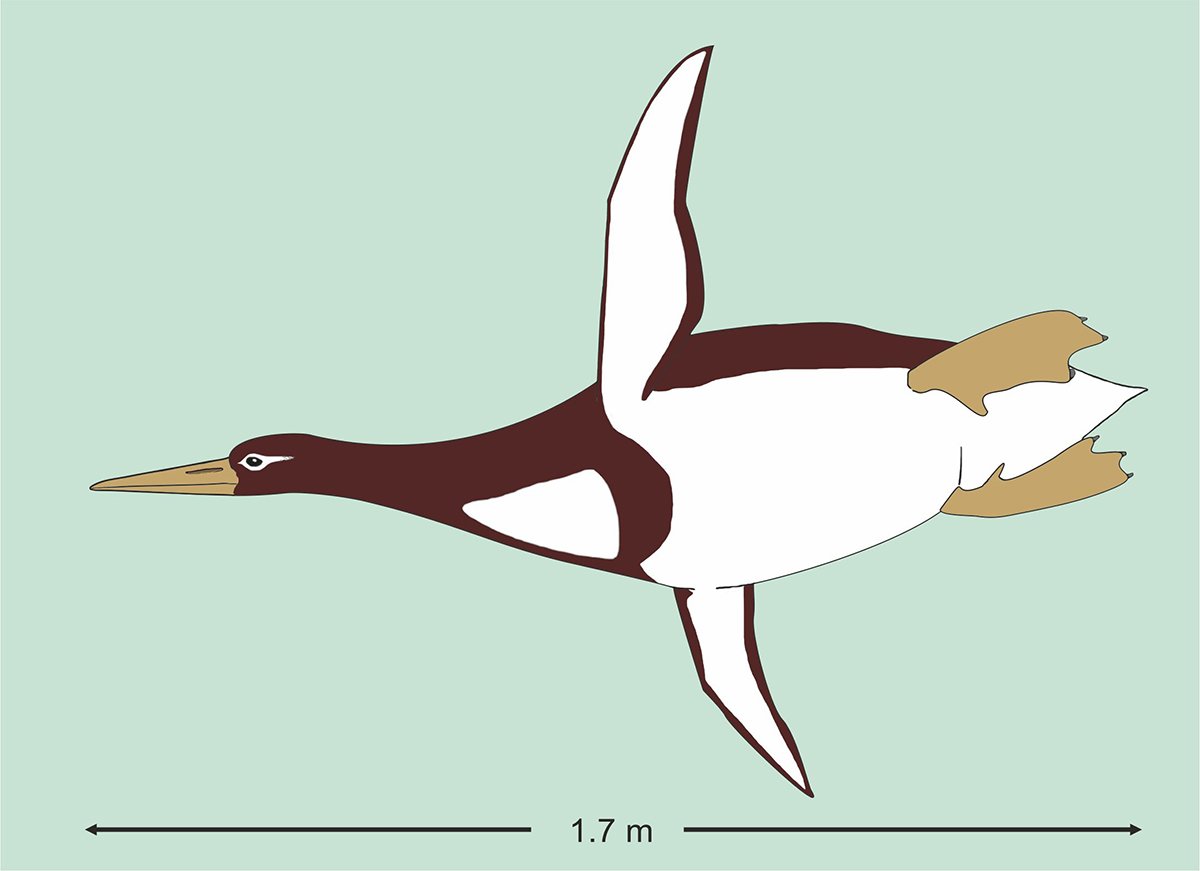Giant penguins: why did they exist and what caused their extinction?

By now you’ve probably heard the story about how a group of New Zealand school kids discovered an all-new species of ancient giant penguin on a school trip to the west coast of the North Island.
While the remains of the giant penguin were discovered in 2006, Kairuku waewaeroa was officially declared a new species to science last week.
“When we compare the new find to its close relatives, it has proportionally longer legs, hence we have named the species waewaeroa, or long legs,” says Daniel Thomas, Senior Lecturer in Zoology at Massey University and co-author of the study describing Kairuku waewaeroa.
“The bird has a collection of other subtle differences, like a slightly more rounded elbow compared with its close relatives. The skull of the new find wasn’t preserved, but we would expect it to have had a long spear-like bill as is found in other giant penguins.”
Other giant penguins? Indeed, Kairuku waewaeroa follows a long line of ancient giant penguin discoveries, many from New Zealand.
“At least 10 species of ancient penguin were larger than the living emperor penguin and are therefore considered giant when compared with living penguin species.
“Several giant penguins are now known from Aotearoa and indeed the first ancient penguin ever described was from Te Waipounamu (South Island of New Zealand). However, similarly aged rocks in South America and Antarctica have produced their own species of giant penguins.”
Exactly what makes New Zealand prime giant penguin territory has to do with the ‘missing’ continent Zealandia.
“After breaking away from the rest of Gondwana more than 80 million years ago, Zealandia drifted north and east and began sinking. When the landmass was eventually lifted back up it brought with it a bounty of marine sediments rich with fossils.”
How big did these giant penguins get?
The largest-known extinct giant penguins are Kumimanu biceae and Palaeeudyptes klekowskii, which were taller than Kairuku waewaeroa by 10 cm or more.
Kumimanu biceae was discovered in Otago, in southern New Zealand, measured1.6 5m in height and weighed 100 kg, while Palaeeudyptes klekowskii, found in Antarctica, was around 2 m tall and came in at a whopping 115 kg.
These varying sizes among the extinct giant penguins raises some interesting questions for scientists such as Daniel. “Why was there a diversity of body sizes amongst giant penguins, and have there been different optimum sizes at different times in the past? Future discoveries may provide answers to these questions,” he says.

How long ago did the giant penguins exist?
The giant penguin fossils found so far have been from the Paleogene period (66-23 million years ago).
The oldest record we have of a giant penguin is Kumimanu biceae at 60–56 million years ago, while Kairuku waewaeroa is one of the most recent at 34–27 million years ago.
Why were these penguins gigantic?
According to Daniel, we don’t have a clear explanation for why these penguins were larger than living species but there are some theories, including that an increase in body size improves thermal insulation for the penguins.
“We know that increasing body size improves the thermal insulation of an animal, and larger animals often have a proportionately lower surface area to volume ratio,” says Daniel. “This ratio is especially important for warm-blooded marine animals, where even warm water can draw heat away from the body fairly quickly.
“Consider the surface of the animal as the interface across which heat is lost, and the volume of the animal as the source of the animal’s heat. If an animal has a lower surface area to volume ratio, then they have a large volume for generating heat and a proportionately smaller surface area for losing heat.
“Becoming giant means that you can stay in water for longer before suffering the effects of hypothermia.”
Another theory is that it made the penguins successful foragers.
“Perhaps large body size was instead connected with foraging. Being heavier, or having larger and more power flippers, may have helped giant penguins access deeper foraging habitats than those that are accessible to modern penguins today.
“Or perhaps being larger enabled these giant penguins to be transoceanic, and we may one day find fossils of Kairuku waewaeroa elsewhere around the world.”
Why did giant penguins go extinct?
We simply don’t know, but according to Daniel it happened around the time that dolphins began diversifying, “so perhaps there was an ecological interaction that wasn’t favourable for the penguins: competitive exclusion, direct predation, or perhaps both?”


